Black Beauty. Anna Sewell. 1877. 245 pages.
Black Beauty is such a GREAT book. I really LOVED, LOVED, LOVED it. Which surprises me, I must admit since I generally don't like animal stories, and I'm even more reluctant to read horse books than dog books. But. I loved it. There was something timeless and wonderful about it. I can see why it became a classic, I hope it remains a
Black Beauty is a great narrator, a great character. I really came to care for this horse right from the start. I had a feeling that life wouldn't always be so easy and gentle for him. I knew that they'd be dark days and nights ahead. And that proved true. As he is sold from one owner to another to another to another to another and so on. But he's so very, very, very good and understanding and wise. There were so many times he proved himself noble and worthy. And Black Beauty wasn't the only character I loved. I loved so many of the human characters too! John Manly, for example, comes to mind, as does James Howard, Joe Green, Jerry Barker, Farmer Grey, Farmer Thoroughgood, etc. Ginger's story is touching, as well, Ginger being one of many horses Black Beauty befriends.
Black Beauty also had a LOT to say about society, about virtues and vices. It had a LOT to say in regards to how animals should be treated--with respect, kindness, understanding, with dignity. It had a LOT to say about how humans should treat one another too. I was surprised at how deep this book was, how wise.
The Good Land. Loula Grace Erdman. 1959/2007. Bethlehem Books. 185 pages.
Carolyn Pierce, pulling the white linen cloth straight on the long dining-room table, thought that perhaps the worst problem a girl could have was for people to think she didn't have any at all. I really, really, really liked this one. It is the last in Loula Grace Erdman's historical trilogy set in the Texas Panhandle. It concludes the hint of romance between Katie and Bryan--from the second book. And Carolyn herself has an admirer! I definitely liked the lightness, the sweetness, the innocence of these three romances. (Melinda and Dennis met in the first book, were married in the second book, and had a boy and a girl by the third book.)
Carolyn is looking forward to going to high school in Amarillo, but that is a year away still when the novel opens. And while it may seem like 'nothing happens' in her own community--farming and ranching community--that isn't exactly true. They've got new stand-offish neighbors for one thing...
The Good Land may not be an adventurous novel with one thrill after another. (The big event is a prairie fire.) But it is a quiet-and-happy novel all the same. For people who love historical fiction, I think it holds enough interest.
Read The Good Land
- If you love historical fiction set in Texas
- If you love historical fiction with the lightest, sweetest touches of romance
- If you enjoy coming-of-age stories
© 2012 Becky Laney of
Becky's Book Reviews
The Wind Blows Free. Loula Grace Erdman. 1952/2006. Bethlehem Books. 271 pages.
Melinda Pierce sat on the green plush seat of the railroad car, listening to the mocking song the wheels of the train were singing. All the way up from East Texas they had said the same thing--"Going away. Going away. Going away," they wailed. And sometimes they added, "Poor Melinda. Poor, poor Melinda." In the 1950s, Loula Grace Erdman wrote a historical trilogy set in the Texas Panhandle. Each book was narrated by a Pierce sister. The first book by the oldest, Melinda, the second book by the middle sister, Katie, the third book by the youngest, Carolyn. The novels are not necessarily dependent on one another. The age of each heroine happens to be fifteen. So in some cases, quite a few years have gone by since the previous book. But of course, if you've got access to all three books, I'd recommend reading them in order!
After their father loses his store in a fire, the Pierce family resettles in the Texas Panhandle. It will require some adapting by each family member, of course, though the twins, Bert and Dick, seem to have it best of all the children. They just can't stop from saying 'oh golly' every time they enter a scene. But for Melinda, the move is doubly hard. She can't stop thinking that she was meant to stay in East Texas and attend the same ladies academy as her best friends. And the move west seems to have doubled her responsibilities. Melinda's "new life" doesn't get off to the best of starts. For while she's busy daydreaming, her youngest sister wanders away. And it takes hours and hours to find her. But the afternoon isn't a complete loss for there is one special young man, Dennis Kennedy, who helps Melinda search for her sister.
For those interested in pioneer stories, this will prove an interesting read. It isn't quite the same time period of the Little House books (it's set a few decades later), but the pioneer-feel is the same. I liked the first book, The Wind Blows Free. It is Melinda's coming-of-age story, readers see how she comes to accept the move and even come to love her new life. But it probably isn't the best of the trilogy.
Read The Wind Blows Free
- If you are looking for more pioneer stories with a "Little House" feel
- If you are looking for historical fiction set in Texas, in the Texas Panhandle
- If you can get past dated (or outdated) references to Native Americans. (The book has Melinda recounting her great-grandmother's oh-so-scary experience with Indians as a child in Georgia. Melinda does seem worried that she might accidentally see an Indian, but everyone assures her that Indians are only to be found on reservations these days, so she need not worry about that.)
© 2012 Becky Laney of
Becky's Book Reviews
The Wild Book. Margarita Engle. 2012. Harcourt. 144 pages.
I really do love Margarita Engle's verse novels set in Cuba. They almost always impress me. I love her poetry. I love the emotion behind the poems. The
way she tells a story. The Wild Book is no exception. Set in Cuba in the early twentieth century, the heroine is based on Engle's grandmother. (I believe the novel is set around 1912?)
Josefa, or "Fefa", is our eleven year old, word-blind heroine. Her inability to read isn't from lack of focus or desire. More than anything, Fefa wants to be able to read and write. She's dyslexic at a time when no one really understood what that meant. Her mother gives her a present, a blank book, and tells her to practice, to take things slow, slow, slow. To keep trying. To not give up. And that is just what our heroine does. She writes--as slowly and carefully as she can--about her life. And it's an interesting time to be sure....since Cuba has won its independence from Spain and is being occupied by the United States...a time with many dangers and risks.
GuessingI memorize all the littleguess-me riddlesin my schoolbook:
A bird has a little whitetreasure chestthat everyone knowshow to openbut no one can close.An egg!
Why does an unlucky shrimpswim backwards?To return to a time before he lost his luck!
I dream up new riddlesand write them all downin my wild book.
My slow handwritingwith its careful swirlsand loopshas almost grown beautiful.
Am I patient?What has changed?
When I write riddles,the pen in my handfeels mysterious.
I feel as powerfulas a girl in a fairy tale,a brave girl who climbsdangerous towersand sips waterfrom magic wells.
Is this how it feelsto be smart? (46-47)Read The Wild Book
- If you're a fan of Margarita Engle
- If you're a fan of verse novels
- If you're looking for historical fiction set in Cuba
- If you're looking for books with dyslexic characters
© 2012 Becky Laney of
Becky's Book Reviews
Moon Over Manifest. Clare Vanderpool. 2010. October 2010. Random House. 368 pages.
The movement of the train rocked me like a lullaby. I closed my eyes to the dusty countryside and imagined the sign I knew only from stories. The one just outside of town with big blue letters: MANIFEST: A TOWN WITH A RICH PAST AND A BRIGHT FUTURE. I thought about my daddy, Gideon Tucker. He does his best talking in stories, but in recent weeks, those had become few and far between. So on the occasion when he'd say to me, "Abilene, did I ever tell you 'bout the time...?" I'd get all quiet and listen real hard. Mostly he'd tell stories about Manifest, the town where he'd lived once upon a time.
His words drew pictures of brightly painted storefronts and bustling townsfolk. Hearing Gideon tell about it was like sucking on butterscotch. Smooth and sweet. And when he'd go back to not saying much, I'd try recalling what it tasted like. Maybe that was how I found comfort just then, even with him being so far away. By remembering the flavor of his words.
This was my third time to read Clare Vanderpool's historical novel, Moon Over Manifest. (I read it twice in 2010.) It is one of those books--in my opinion--that reads just as good, if not better, upon rereading. I never get tired of reading great books, of books that are among 'my favorite and best.' How could I ever know which books were truly my favorites unless I reread them again and again?! How could one reading of a great book ever, ever, ever be enough?!
Moon Over Manifest is a coming-of-age novel that is a historical mystery. The heroine, Abilene, is a young girl who's just arrived--in her own way, in her own style--in the town of Manifest. She's heard a few stories from her father--this is the town where he spent some of his childhood; but she knows she's just got a fraction of the stories. For there are many, many things she doesn't know about her father--past or present. Like, she doesn't really understand why her father is sending her away now. Yes, it's the depression. Yes, times are hard. Yes, life on the road is tough and unpredictable. But isn't being together worth it? She has certainly always thought so...
So the novel has a framework to it. There is the modern-day story with Abilene and her brand-new friends as they set about discovering clues to the past--letters, newspaper articles, special objects, etc. And the flash-back story that stars Jinx and Ned--two young men who are the best of friends. This is the story set during the first world war. This is the story that sees one of the young men going off to war and never coming back home. This is the story that shows the devastation of the 'Spanish' influenza. And that's just the beginning.
I loved so many things about Moon Over Manifest. The characterization. The storytelling. The writing. I definitely recommend this one...
Read Moon Over Manifest
- If you're a fan of historical fiction
- If you're looking for a book set in the 1930s
- If you're looking for a book set during World War I
- If you like storytelling
- If you like historical mysteries
- If you like coming-of-age stories
© 2012 Becky Laney of
Becky's Book Reviews
The Dollhouse Magic. Yona Zeldis McDonough. Illustrated by Diane Palmisciano. 2000. Henry Holt. 86 pages.
Of all the streets in town, Lila and Jane Finney like Cheshire the very best. It's not because of the large old oaks whose spreading branches arch and nearly meet in the air, creating, in spring and summer, a most beguiling canopy overhead. Nor is it the well-tended flower beds, though these are filled with an ongoing seasonal display: tulips and daffodils in spring; roses, lilies, and marigolds in summer; asters and mums in the fall. It is not even because of the way the street ends in a lush, grassy circle, in the center of which is a handsomely carved old stone fountain. No, as attractive as all these things are, what Lila and Jane love most is a house on Cheshire Street, a three-story dollhouse with real clapboard siding and a cedar shingle roof that sits in Miss Amanda Whitcomb's front window. It all depends on your expectations. On what you want this one to
be. Is that fair to a book? Well, I'm not sure it is. But it's one of those things that just happens naturally.
So The Dollhouse Magic is historical fiction for young readers. (I'm thinking second to fourth graders, though that all depends on reading levels of course.) The Dollhouse Magic is set during the Great Depression (1930s). Readers are introduced to two sisters, Lila and Jane, there are other siblings in the family, but Lila and Jane are the stars of this one. The book is about their "adventures" visiting Miss Amanda Whitcomb's dollhouse. It definitely IS an adventure for them. It's quite a thrill to be allowed to play with this dollhouse, to look at all the furniture and dolls. And the dollhouse is perhaps the main attraction at the beginning, but, the two do become very friendly with this old woman. They enjoy the treats she shares. Perhaps they don't realize just how special she is...until...well, you can guess what happens next.
What I didn't quite like about The Dollhouse Magic is how manipulative it is. Yes, I know that people die. I know that is natural. And yes, I know that people even die on Christmas Eve. But. Why oh why oh why does it have to happen in this happy little book...especially without any warning. It's not like we see Miss Whitcomb getting weak or sick. It just didn't seem fair or right.
I would have HATED this ending as a kid. I would have. I'm not all that fond of it as an adult. So my question for you is this... if a character is going to die in a book, do you want some foreshadowing or hinting along the way? Do you want or need time to prepare? Or do you like being surprised? Should sad books come with warnings?
© 2012 Becky Laney of
Becky's Book Reviews
Inside Out & Back Again. Thanhha Lai. 2011. HarperCollins. 262 pages.
1975: Year of the CatToday is Tet,the first dayof the lunar calendar.
Every Tetwe eat sugary lotus seedsand glutinous rice cakes.We wear all new clothes,even underneath.
Mother warns how we act todayforetells the whole year.
Everyone must smileno matter how we feel.
No one can sweep,for why sweep away hope?No one can splash water,for why splash away joy?Inside Out & Back Again is a verse novel with wow-factor. If you like compelling novels with great narrators, then it's definitely a must-read. The heroine of the novel is a young girl named Ha. Her family faces a difficult choice, but they make the only choice they feel they can make at the time, they choose to leave war-torn Saigon. They could apply to go anywhere, they could try to find a sponsor in a number of countries, but they choose America. The family ends up in Alabama. For better or worse as Ha herself can tell you. For this sensitive, well-spoken young girl is made to feel ridiculous, stupid, and worthless. She's bullied by many of her classmates. There are days Ha feels that even a war-torn country would be a better place to live than Alabama. But the novel isn't without hope. For Ha's life isn't hopeless, good things can and do happen to her and her family.
I definitely recommend this one!!! I loved it SO MUCH MORE than Dead End in Norvelt. (Have you read both books, which one did you like better?!) I thought the poems were so well-written. Here's one called "Two More Papayas"
Two More Papayas
I see them first.Two green thumbsthat will grow intoorange-yellow delightssmelling of summer.
Middle sweetbetween a mango and a pear.
Soft as a yamgliding downafter three easy,thrilling chews. (21)And one called "First Rule." It is one of many, many, many poems about Ha's experiences learning English/English grammar.
First Rule
Brother Quang saysadd an s to nounsto mean more than oneeven if there's already an ssitting there.
GlassGlasses
All dayI practicesqueezing hissesthrough my teeth.
Whoever invented Englishmust have lovedsnakes. (118)Read Inside Out & Back Again
- If you are interested in Vietnam
- If you are interested in historical novels
- If you are interested in verse novels
- If you are looking for heroines with heart
- If you are looking to read this year's Newbery honor book
- If you are looking for books about grieving and healing
- If you are looking for family books
- If you are looking for books with school settings and bullying
© 2012 Becky Laney of
Becky's Book Reviews
Bud, Not Buddy. Christopher Paul Curtis. 1999. Random House. 245 pages.
Here we go again. We were all standing in line waiting for breakfast when one of the caseworkers came in and tap-tap-tapped down the line. Some novels have me at hello. Bud, Not Buddy wasn't like that--for me. It was a novel that had to grow on me. It was a quiet novel, in a way, that in the end proved most satisfying. Chapter by chapter I came to know Bud Caldwell better, and I started to care about him. By the end, the novel felt just right, so perfectly right. It is easy to see why this one won awards!!!
Bud, Not Buddy is set in the 1930s during the Depression. It is set in Flint, Michigan, for the most part. Though this novel will see Bud setting out on quite a journey. He's an orphan, just eleven, in search of one simple thing: a father, a family, he's never known, never hoped to know. So what led him to begin this journey? Well, he had to run away from his last placement in a foster home. The family had a son who was a few years older, and, this boy was cruel and mean, and his parents were stupid enough to believe their son an angel. Could he have gone back to the Home? Maybe, maybe not. But isn't this ending worth it?!
Read Bud, Not Buddy:
- If you are looking for a historical read with plenty of heart and a good, satisfying ending
- If you are looking for books set during the Depression that are realistic but not depressing
- If you are looking to read a great Newbery winner with memorable characters
© 2012 Becky Laney of
Becky's Book Reviews
 The Friendship Doll. Kirby Larson. 2011. Random House. 208 pages.
The Friendship Doll. Kirby Larson. 2011. Random House. 208 pages.
The old doll-maker Tatsuhiko poured boiling water into the teapot with trembling hands and inhaled deeply. It was the last of his tea. He portioned out his breakfast rice and took a seat on a tatami mat. One of the blessings of growing old was that it did not take much to make his stomach content. And this morning his heart was so full that food seemed trivial.
One Japanese doll, Miss Kanagawa, sent in friendship in 1927, finds herself 'awakened' to the joys and sorrows of humanity in Kirby Larson's The Friendship Doll. Miss Kanagawa will be seen by many, many people in her travels. Especially at the beginning. When she's on display, when she's on tour, with the other friendship dolls. But can a doll touch others--touch human lives--if she herself can't be touched or played with?
The Friendship Doll is historical fiction with a touch of fantasy. (Readers will have to believe that a doll is capable of thinking and loving, etc.) The book is a series of stories, the main connection between the stories being the doll. Each story is set in its own time period. The first is set in 1927; the second in 1933; the third in 1937; the fourth covers a handful of years--1939 to 1941. (There is an epilogue that brings it closer to the present.)
For much of the novel Miss Kanagawa acts as a conscience for a handful of heroines. She does this without saying a word, of course. But Miss Kanagawa is more than just a scolding sort of doll. She becomes more 'alive' with each experience. She has always been observant, but she becomes wiser and more compassionate with each adventure. (More human, less doll-like).
Did I like this one? Yes!!! I definitely liked this one! It was interesting to see the different characters. I think I liked the 1933 and 1937 stories best of all. But I enjoyed all of them.
Read The Friendship Doll
- If you like stories about dolls. Like Hitty, Her First Hundred Years. Like Miss Hickory. Like The Miraculous Journey of Edward Tulane. Like The Velveteen Rabbit.
- If you like historical fiction set in the 1920s, 1930s, 1940s.
© 2012 Becky Laney of
Becky's Book Reviews
Sylvia & Aki. Winifred Conkling. 2011. Random House. 160 pages.
Sylvia Mendez imagined her first day of third grade at Westminster School. She would use her freshly sharpened yellow pencils to write her name in cursive at the top of her worksheets. Her just-out-of-the-shoe-box black Mary Janes would glide across the polished linoleum of the hallway. At the end of the day, she would come home and her father would hug her and ask, "What did you learn today?" Then she would tell him about her teacher and her classmates and everything else.Sylvia never imagined the one that that actually happened even before her first day of school: she was turned away.This wonderful little book is based on true events. The main characters Sylvia Mendez and Aki Munemitsu are real people, the novel is based on their experiences during World War II.
Sylvia Mendez and her siblings have been told they cannot attend Westminster School because they are Mexican. They will need to attend the Mexican school in the county. Every Mexican--no matter where they live--are to go to the same school. To say that the two schools are anywhere close to equal would be a joke. But Sylvia's father takes his children's education VERY seriously. And the answer the school board gives him just isn't acceptable to him. What he sees is injustice, and he wants it to end. This fight for justice and equality will end in court. And the chapters focused on this trial are fascinating and disturbing. Those chapters alone would make this one a worthy read.
Aki Munemitsu and her family are one of many families of Japanese descent being deported from California after the bombing of Pearl Harbor. Her family is being sent to an internment camp in Arizona. The novel focuses on her experiences during those years.
So how do these two stories connect? Sylvia's father is leasing the farm from Aki's family. Sylvia is living in Aki's house, sleeping in her bedroom. Sylvia discovers Aki's doll, the doll she had to leave behind. Sylvia decides to go with her dad on one of his trips to the internment camp to pay rent. The two girls meet and decide to write one another.
I liked this one. I did. It was a wonderful little novel. I found it informative and fascinating. I learned so much while reading this one. I would definitely recommend it!
Favorite quotes:
After weeks of trying to convince people to sign his letter to the school board stating that Mexican and white children should go to school together, Sylvia's father had collected only eight signatures.
"What are you going to do with the letter?" Sylvia asked her father. She didn't think he would turn it in with so few names.
"I'm going to deliver it," he said. "It would be the right thing to do, even if no one else is willing to sign."
Sylvia rode with her father to the courthouse in Santa Ana on the day he dropped off the letter. Just a couple of blocks from the courthouse Sylvia saw a sign posted in a diner window: NO DOGS OR MEXICANS. The words made her feel sick. She was glad her father had spotted someone he knew on the street and hadn't noticed the sign.
That sign is talking about me, she thought. Dogs and Mexicans and me. The sign gnawed at Sylvia all afternoon and into the evening. Before drifting off to sleep that night, she stared at the ceiling and thought about how those four little words could hurt her so much. Then she recalled the hateful signs she had seen posted in town about the Japanese--hand-lettered signs reading JAPS GO HOME and government-printed notices telling them that they had to go away, to leave their houses, to go to the camp
The Twenty-One Balloons. William Pene du Bois. 1947. Viking 180 pages.
There are two kinds of travel. The usual way is to take the fastest imaginable conveyance along the shortest road. The other way is not to care particularly where you are going or how long it will take you, or whether you will get there or not. I should have believed my mother. She's been trying to tell me that this was a good read for many, many years. And she was right. This is a good read. I'm not sure I'd say it was the
best, best book I've ever read. Or the best Newbery I've ever read. But this book is anything but boring! It surprised me in all the right ways.
The hero of this one is Professor William Waterman Sherman. This teacher-turned-adventurer left San Francisco in August of 1883 hoping to spend about a year in his balloon. He'd chosen his design carefully and thoughtfully. And he was so excited at the thought of being away from it all--all the cares, all the stress, all the worries of this world. He wanted FREEDOM and then some. But that wasn't to be...
For an accident leaves him stranded on a "deserted" island. The island's community does NOT want to be discovered by the world, so any visitors are welcomed permanently in the community and renamed. I don't want to give away all the quirks of this one though! But I found this one to be quite a read!
Enjoyable and satisfying...a great way to spend the afternoon.
© 2011 Becky Laney of
Becky's Book Reviews
 Swift Rivers. Cornelia Meigs. 1932/2004. Walker. 288 pages.
Swift Rivers. Cornelia Meigs. 1932/2004. Walker. 288 pages.
It was the summer that Chris Dahlberg was seventeen that he mowed the high meadow alone for the first time.
I can't say that I LOVED Swift Rivers. But I can say that I did enjoy it--most of it at least. I checked it out from the library not really knowing what to expect. My plan was to give it a chapter or two to see if it was even something I wanted to read. And it was. Chris Dahlberg is a great hero for an adventure story. After his parents' death, his Uncle became responsible for him. But this responsibility didn't include love and respect. Chris works hard day after day after day with no one to really appreciate him. Since the Uncle absolutely HATES his father--Chris' grandfather--when Chris decides to leave home for four days to check on his grandfather, the Uncle forbids him, warning him that if he leaves he shouldn't bother coming back. For he'll never, ever, ever welcome him back into his home. Knowing that the grandfather is getting older, knowing that there must be a reason why he didn't come to help the mowing this year--like he has every year since he can remember--he makes his decision. He just has to see if his grandfather needs help. He needs to see if grandfather is ready to make it through the winter. The uncle is true to his word, but that doesn't turn out to be such a bad thing. For Chris and his grandfather and a helpful neighbor or two come up with an idea. It's a bit of a risk, it's not really been done before, but if it succeeds, it will be the start of something big. Chris and his grandfather are determined to enter the logging business, to cut down trees, and float the logs down the river, etc.
Half of the novel is the adventure of the logs-down-the-river. How this journey changes Chris. So it's a coming-of-age adventure story set in the 1830s. It's an industrious novel--one that focuses on men hard at work. It's a dangerous job that requires focus and skill and determination.
I liked this one because I liked Chris. I didn't necessarily love all the descriptions of river rafting. But even though I wasn't loving each and every page, I still enjoyed it for the most part.
© 2011 Becky Laney of Becky's Book Reviews
The Trumpeter of Krakow. Eric P. Kelly. 1928. 208 pages.
It was in late July of the year 1461 that the sun rose one morning red and fiery as if ushering in midsummer's hottest day. His rays fell upon the old city of Krakow and the roads leading up to it, along which rolled and rocked a very caravan of peasants' wagons. Don't judge a book by its cover. Or, at least don't judge
this book by its cover! For appearances can be deceiving, The Trumpeter of Krakow is anything but boring! It's an exciting adventure story with elements that reminded me of some great fantasy novels! (It stars an alchemist and his "student" who is obsessed with finding the philosopher's stone.)
The Charnetski family has come to Krakow seeking protection. The father (Andrew Charnetski) has relatives in the city, and he's hoping to find sanctuary there until he can have an audience with the King (Kazimir Jagiello). But when he arrives, he learns that his relative has died--been murdered--and that the rest of the family has fled. Knowing that his family is in great danger--especially if the man seeking to prevent him from entering the city comes back to cause trouble--he returns to the market to think out his options. Joseph, the son, happens to rescue a young woman from an attacking dog, and in doing so wins the gratitude of her uncle. An invitation is extended to Joseph and his family, and lodgings are arranged. Around the same time, Andrew meets an important man in the city, Jan Kanty, who listens sympathetically and offers great advice. Sell your horses and your cart, change your name, and become the trumpeter in the tower of the Church of Our Lady St. Mary. Andrew is happy to follow this advice closely. He even teaches his son to play the trumpet hymn (Heynal) that is to played four times every hour. There is a story about this hymn, and a legend of sorts about a trumpeter. Readers learn of this at the very beginning, for it is set several centuries before this adventure even begins.

There is never a dull moment in The Trumpeter of Krakow. For there are the neighbors above and below to keep things interesting. The most interesting, perhaps, being the alchemist, Kreutz, he is the distracted uncle of the grateful girl, Elzbietka. He has a student, Johann Tring, a young man that makes many--including Joseph and Elzbietka--nervous. The two--in varying degrees--are obsessed with finding out the secret of how to make gold, fascinated with the philosopher's stone. The niece feels that Tring is a bad, bad influence on her uncle, and that Tring is leading her Uncle into dangerous territory.
And of course, never for a minute forget that this family is being pursued. Why? Well, the family DOES have a secret, they have something in their possession that drives people mad, something that people are willing to kill to have.
The Hidden Gallery (The Incorrigible Children of Ashton Place #2) Maryrose Wood. 2011. HarperCollins. 320 pages.
"But the workmen swore the repairs to the house would be finished by now!" It's been a few months since the disastrous Christmas affair when the three Incorrigible children--Alexander, Beowulf, and Cassiopeia--went a little crazy in front of all the guests. But the children have made friends with the squirrel, Nutsawoo, and they've been behaving well enough ever since. They've been themselves, true, confusing words like matador and metaphor. But they've not been awful or dreadful. Still, a little change of scene might be just the thing. For Penelope Lumley, the young but bright governess, has been invited to London by one of her former teachers. And Miss Lumley is eager to go with the children. She didn't necessarily expect Lord and Lady Ashton to want to go to London too. But the more the merrier, right?
So this second book is ALL about their London adventure. Do you think that these three children--supposedly raised by wolves--can go unnoticed in London? You're right. Things do get a little messy. But in the midst of the chaos, Miss Lumley discovers that she needs to be extra careful. For there is someone who wants to hurt the children. But who?! Miss Lumley's former teacher is NO help at all. Just warning Penelope to not ask questions of anyone and to leave well enough alone. But does that really sound like something Penelope can do?
I liked The Hidden Gallery. I didn't love it as much as
the first one, perhaps, but it was a good read, an enjoyable one. Within this one, Penelope makes a new friend, Simon, whom she trusts almost immediately. At times I forget that Penelope is VERY young herself--just fifteen or so? So it was nice to see that she is interested in boys too. That she can think of more than Latin and geography and such.
© 2011 Becky Laney of
Becky's Book Reviews
William's Midsummer Dreams. Zilpha Keatley Snyder. 2011. Simon & Schuster. 224 pages.
It was on a Saturday near the end of September when the doorbell at 971 Eleanor Street rang long and loud, and then rang again. In
William S. and The Great Escape, William and three of his siblings (Jancy, Buddy, and Trixie) escaped their abusive home and traveled on their own--with a little "help" from a friend, Clarice--to see their Aunt Fiona. They were hoping, of course, that she would be willing to open her home to them. She was. And for the first time in a long time--since the death of his mother--William was able to feel good about his life, his situation.
The first thirty-two pages of William's Midsummer Dreams rushes the reader through nine months of their lives in their new home. (Chapter four, for example, takes us from mid-October to mid-June.) The focus--if you can call anything that abbreviated focused--is on William counting down the days until summer. He is oh-so-excited about the opportunity to audition for a role in Mannsville's summer production of A Midsummer Night's Dream that it is all he can think about, dream about, or talk about. His sister, Jancy, is understandably annoyed. (I thought it was understandable anyway!) He's memorized every one of Puck's lines, every one of his cues. He's READY. He's more than ready. But he can't help being nervous too.
He'll be spending most of his summer vacation in Mannsville with Clarice, Miss Scott, and the rest of the cast and crew. He'll be living his dream, acting in a real production with real actors.
So the novel is ALL about William's adventures in the theatre. The drama that happens on stage and off stage.
If you like Shakespeare OR the theatre OR historical fiction set in the 1930s OR family stories about brothers and sisters, then William S. and The Great Escape and William's Midsummer Dreams may be books you'd enjoy.
Did I like it? Yes. I definitely liked it. I am not sure that I absolutely loved it. (I was a little hesitant about the beginning, it didn't get off to the best of starts.) But. For the most part, I did enjoy this second book about William. I didn't realize until I finished this one how much I missed Jancy and Buddy and Trixie. The novel didn't have quite the same charm as the first one. But what it lacks in family drama, it makes up for in the theatre.
© 2011 Becky Laney of
Becky's Book Reviews
View Next 25 Posts



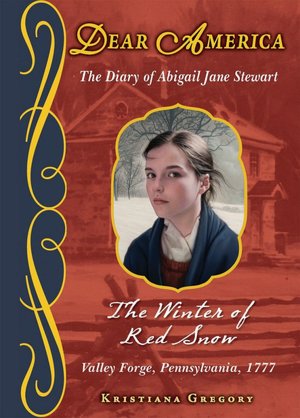
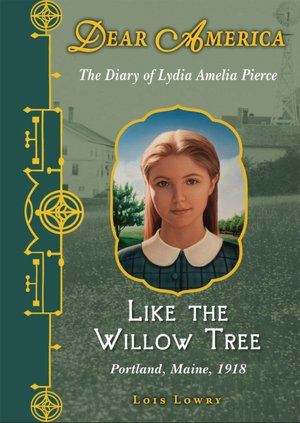

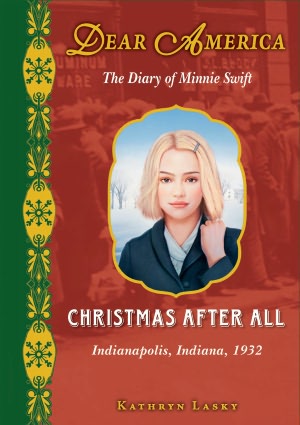


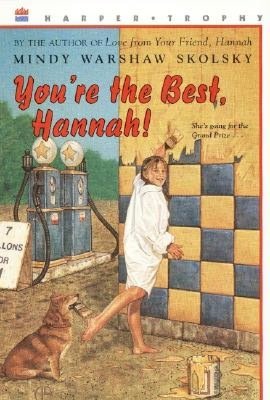

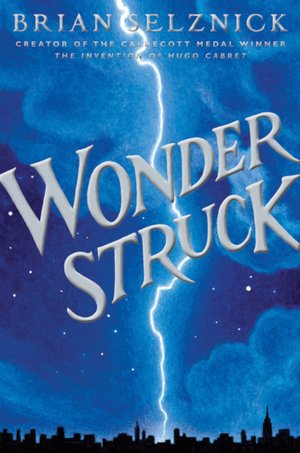

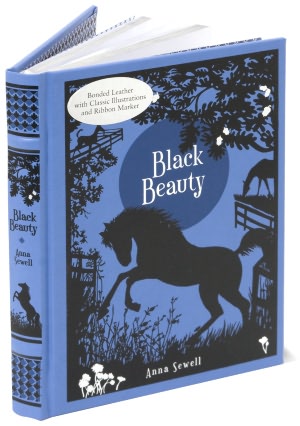

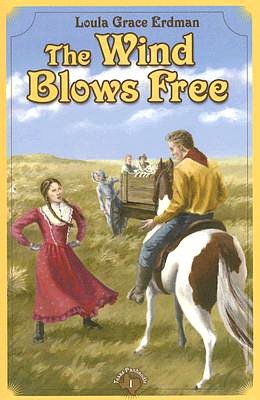
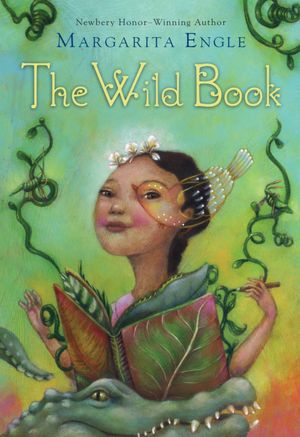
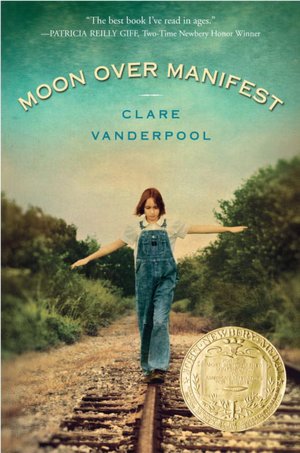
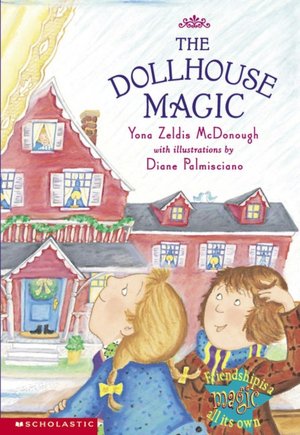

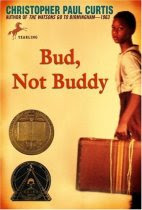






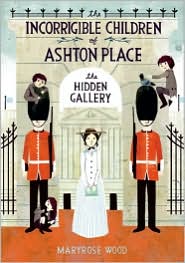

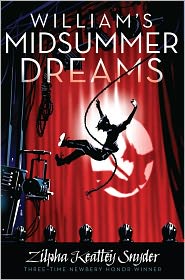
My relatives always say that I am killing my time here at net,
but I know I am getting experience daily by reading thes nice
content.
Also visit my site - christian louboutin outlet
I read this paragraph completely concerning the difference of most recent and
previous technologies, it's remarkable article.
My web site ... http://www.yourtobaccosstore.com
Gifts make both you and your loved one relish the sweetest memories of togetherness. Gifts are the guides to take both of you to the down memory lane, and in no time, you start feeling like being together. Visit www.smartflowersdelhi.com for more details.